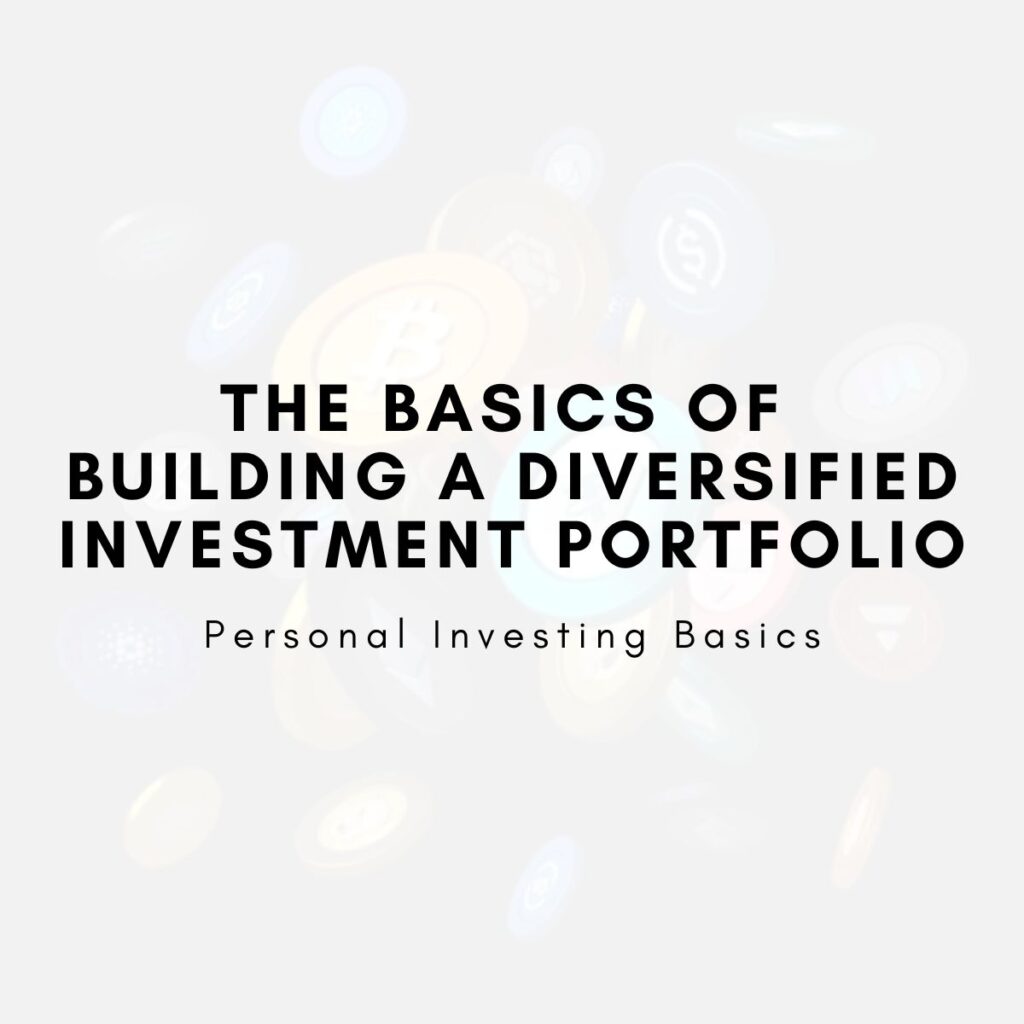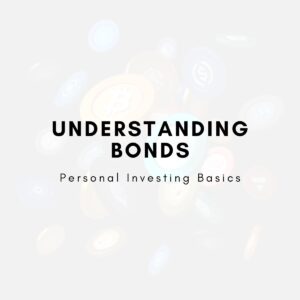
What is the key to building a diversified investment portfolio?
The key to building a diversified portfolio is spreading your investments across various asset classes, such as stocks, bonds, real estate, and alternative investments like cryptocurrencies, to reduce risk and increase potential returns. By balancing different asset types, you can protect your investments from market volatility and improve long-term financial growth.
Summary Table: Understanding Diversified Investment Portfolios
| Section | Summary | Key Tips | Examples |
|---|---|---|---|
| What Is Diversification in Investment? | Diversification is the strategy of spreading investments across various asset classes to reduce risk. | Invest in different types of assets like stocks, bonds, and real estate to reduce exposure to any single market risk. | Investing in both stocks and bonds: During a market crash, stocks may fall while bonds may remain stable or increase. |
| Why Diversification Matters? | Diversification reduces risk, enhances portfolio stability, and can offer better returns over time. | Aim for balance across asset classes to reduce the impact of poor performance in one area. | During a downturn, a bond-heavy portfolio might be less affected than one focused solely on stocks. |
| Asset Classes to Consider for Diversification | Key asset classes include stocks, bonds, real estate, cryptocurrencies, and commodities. | Allocate investments across multiple asset classes based on your financial goals and risk tolerance. | Stocks for growth, bonds for stability, real estate for income, and commodities like gold for inflation protection. |
| How to Build a Diversified Portfolio? | Determine your investment goals, risk tolerance, and time horizon before choosing your asset allocation. | Set clear financial goals and assess risk tolerance to determine the right mix for your portfolio. | A 25-year-old might invest 80% in stocks and 20% in bonds, while a 60-year-old might reverse the allocation for safety. |
| Monitoring Your Portfolio | Regularly review your portfolio’s performance and make adjustments to maintain your target allocation. | Rebalance periodically to ensure your portfolio aligns with your goals and risk tolerance. | Selling stocks after strong performance and investing in bonds or real estate to rebalance a portfolio. |
This table summarizes the key sections of building a diversified investment portfolio, emphasizing diversification’s importance in reducing risk and improving returns. It provides tips on asset classes, portfolio strategies, and real-life examples to illustrate how different types of investments can work together to create a balanced and stable portfolio. By regularly reviewing and adjusting your investments, you can stay on track with your long-term financial goals.
Introduction
Building a diversified investment portfolio is essential for anyone looking to grow their wealth while managing risk. Whether you’re a beginner or an experienced investor, diversification helps ensure that you’re not overly exposed to any single asset or market sector. This strategy can provide stability to your financial future, protect you during market downturns, and offer the potential for higher returns over time. In this guide, we’ll cover the basics of building a diversified investment portfolio, the different asset classes you can invest in, and key strategies to follow. By the end, you’ll have the knowledge to create a balanced investment portfolio tailored to your goals and risk tolerance.
What Is Diversification in Investment?
Diversification in investing refers to the practice of spreading your investments across different assets, industries, and geographic locations. This strategy helps reduce the risk of losing all your investments in a market downturn, as different asset classes tend to perform differently under various economic conditions. The idea is that a well-diversified portfolio can weather the ups and downs of the market more effectively than one concentrated in a single type of investment.
Why Diversification Matters?
The main reason diversification is important is because it reduces risk. When you diversify, you’re less likely to lose a large portion of your portfolio if one investment fails. For example, if you have investments in both stocks and bonds, a downturn in the stock market may be offset by gains in the bond market. This balance helps stabilize your portfolio.
Example: Let’s say you invest $10,000 in a stock-heavy portfolio. In a market crash, your stocks may lose 30%, reducing your portfolio to $7,000. However, if you had diversified by adding $5,000 in bonds and real estate, your losses would be minimized because these assets may not be as affected by the market downturn.
The Benefits of Diversification
- Risk Reduction: As mentioned earlier, spreading your investments across different assets reduces the risk of large losses.
- Stability: A diversified portfolio tends to be more stable because asset classes often move in different directions.
- Better Returns Over Time: By diversifying, you increase your chances of participating in the growth of multiple markets, leading to higher potential returns.
Asset Classes to Consider for Diversification
To build a diversified portfolio, it’s essential to invest in a variety of asset classes. Here are some key types of investments to consider:
1. Stocks (Equities)
Stocks represent ownership in a company and offer the potential for high returns. They tend to perform well in growing economies, but their value can be volatile. As part of a diversified portfolio, stocks provide growth potential, but they also come with risk.
Example: Investing $10,000 in the stock market over a long period can provide significant growth, especially if you focus on well-established companies or high-growth sectors like technology.
2. Bonds (Fixed Income)
Bonds are essentially loans made to corporations or governments in exchange for periodic interest payments. Bonds are generally less risky than stocks and provide a stable income stream. They help balance out the higher volatility of stocks in a diversified portfolio.
Example: A bond investment of $5,000 in a government bond may offer a 3% annual return, providing a steady income stream without the risk of stock market fluctuations.
3. Real Estate
Real estate investments involve purchasing property for rental income or capital appreciation. Real estate is an effective way to diversify your portfolio as it tends to have a low correlation with stocks and bonds. Real estate can also provide a hedge against inflation.
Example: Investing $10,000 in real estate can offer rental income and long-term capital appreciation. In a market downturn, while stocks may suffer, real estate may remain stable or even appreciate due to demand for housing.
4. Cryptocurrencies
Cryptocurrencies, like Bitcoin and Ethereum, are digital currencies that offer high potential returns but come with high volatility and risk. For a diversified portfolio, a small allocation to crypto can provide significant upside, though investors should be cautious.
Example: You invest 5% of your portfolio ($2,000) in Bitcoin. Over a few years, the value of Bitcoin skyrockets, giving you a 300% return. However, the value can also drop dramatically, so it’s essential to manage your exposure.
5. Commodities
Commodities like gold, oil, and agricultural products are often used to diversify against inflation and economic uncertainty. Commodities usually move in the opposite direction of stocks during times of economic turmoil.
Example: During an economic downturn, while stock prices fall, the price of gold might rise as investors seek safe-haven assets. Investing in a gold exchange-traded fund (ETF) could provide some protection.
How to Build a Diversified Portfolio?
Building a diversified portfolio involves carefully choosing assets from different classes based on your risk tolerance, investment goals, and time horizon.
1. Set Clear Investment Goals
Before diversifying, it’s important to know your goals. Are you investing for short-term growth, retirement, or income? Setting clear goals will help determine the right mix of assets for your portfolio.
Example: If you’re investing for retirement in 30 years, you may want to allocate a higher percentage of your portfolio to stocks for growth. If you need income in the next 5 years, you may prefer bonds for stability.
2. Assess Your Risk Tolerance
Your risk tolerance will influence how much of your portfolio you allocate to volatile assets like stocks and cryptocurrencies. Younger investors with a long time horizon may afford to take on more risk, while older investors closer to retirement may prioritize stability and income.
Example: A 25-year-old may choose to invest 80% of their portfolio in stocks and 20% in bonds, while a 60-year-old might have a more conservative mix, such as 40% stocks and 60% bonds.
3. Regularly Rebalance Your Portfolio
Over time, the value of different assets in your portfolio will change. Rebalancing involves adjusting the allocation of assets to maintain your desired level of risk. For example, if stocks perform well and become a larger portion of your portfolio, you may want to sell some and invest in bonds or real estate to maintain balance.
Monitoring Your Portfolio
Building a diversified portfolio is not a one-time task. It’s essential to regularly monitor the performance of your assets and make adjustments when necessary. Stay informed about market trends, changes in your financial situation, and shifts in your investment goals.
Conclusion
Building a diversified investment portfolio is one of the most effective ways to manage risk while pursuing long-term financial growth. By spreading your investments across various asset classes, such as stocks, bonds, real estate, and cryptocurrencies, you can reduce volatility and increase your chances of achieving your financial goals. Diversification doesn’t guarantee a profit, but it can help smooth out the bumps in the road and lead to better, more consistent returns over time.
Takeaways
- Diversification reduces risk: Spread your investments across different asset classes to protect yourself from market downturns.
- Asset classes to consider: Stocks, bonds, real estate, cryptocurrencies, and commodities should all be part of your diversified portfolio.
- Set goals and assess risk: Understand your investment goals and risk tolerance before deciding how to diversify.
- Rebalance regularly: Review your portfolio periodically and make adjustments to maintain your target allocation.
- Monitor performance: Keep track of how each asset is performing and stay informed about market trends.




